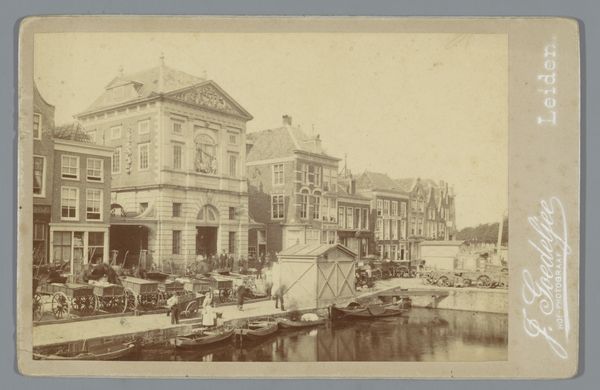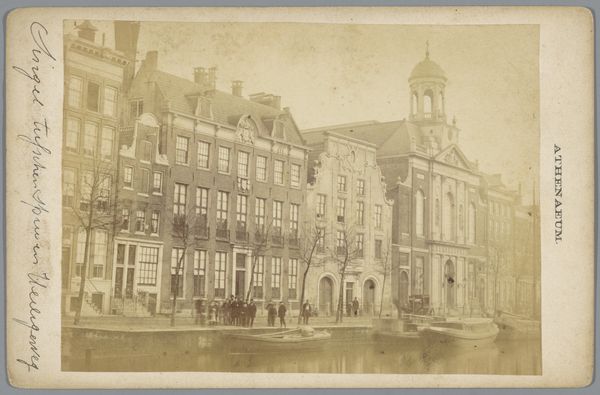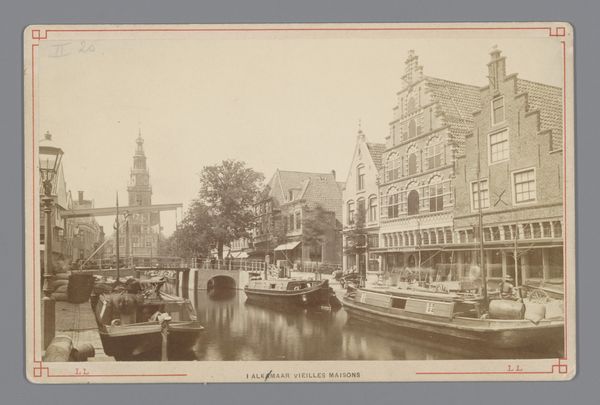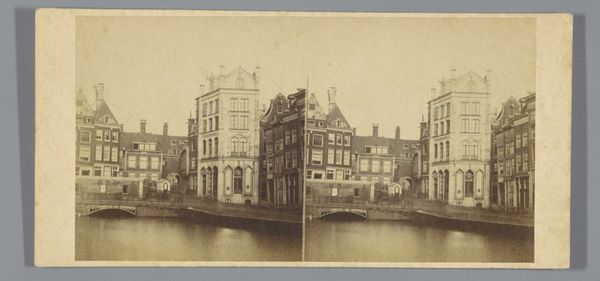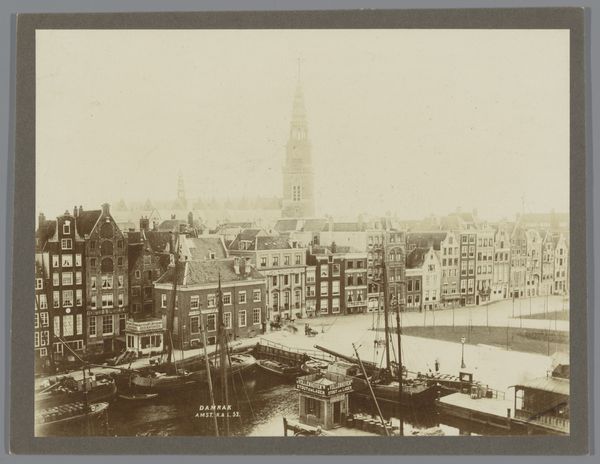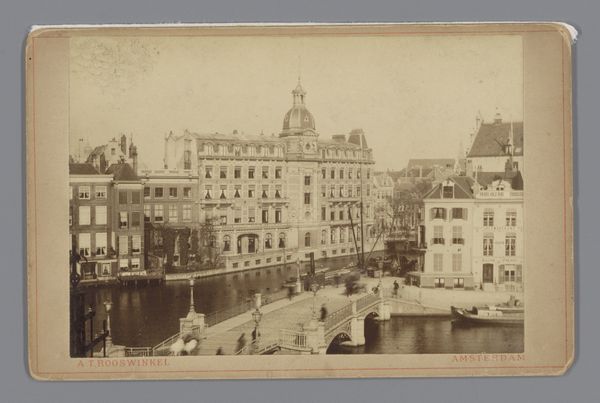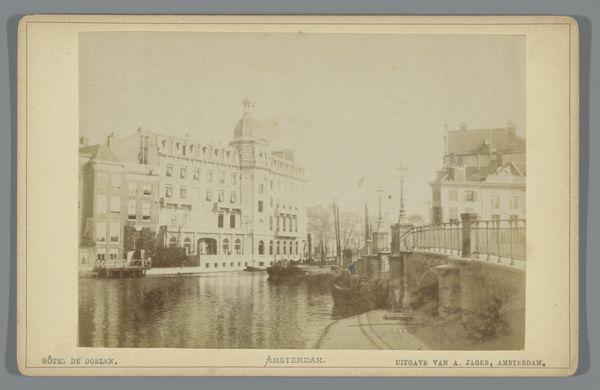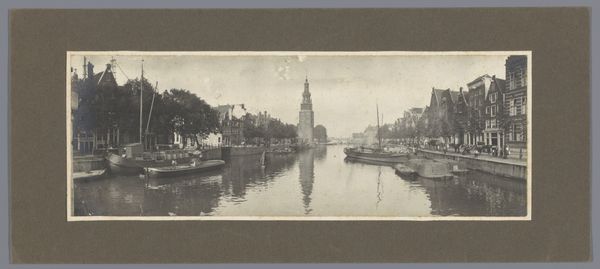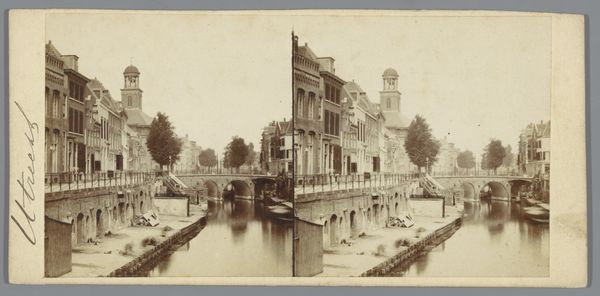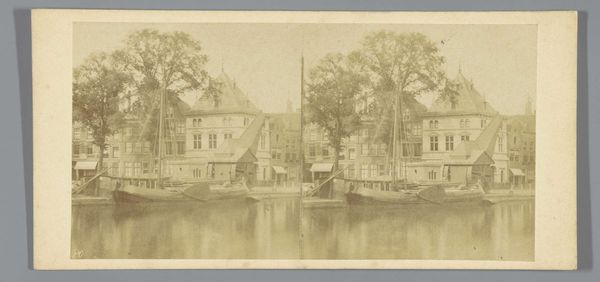
Straatgezicht met de Waag en de toren van het stadhuis te Leiden 1882 - 1914
0:00
0:00
hendrikjonker
Rijksmuseum
print, photography, gelatin-silver-print
#
16_19th-century
# print
#
landscape
#
photography
#
gelatin-silver-print
#
19th century
#
cityscape
#
paper medium
#
watercolor
Dimensions: height 167 mm, width 108 mm
Copyright: Rijks Museum: Open Domain
Curator: This is a photograph titled "Straatgezicht met de Waag en de toren van het stadhuis te Leiden" by Hendrik Jonker, dating between 1882 and 1914. It’s a gelatin silver print capturing a serene cityscape. Editor: My initial impression is a sense of quiet dignity. The composition feels very grounded, almost stoic, in its presentation of this Dutch city. There's a certain timelessness in its grayscales. Curator: Indeed. The gelatin silver print is known for its ability to capture a wide range of tones and sharp details, crucial for recording the intricate brickwork and architectural features. The photograph uses this clarity to imbue Leiden's landmarks with historical weight. Notice how the image positions the Waag, or Weigh House, along with the City Hall tower to symbolize civic authority and mercantile exchange. Editor: It’s also fascinating how the daily life—the figures on the boat, the implied presence of commerce—is interwoven with those symbols of power. What does this relationship communicate about Dutch society at the turn of the century? Are these structures in the service of these anonymous labourers? The way Jonker layers social narrative is intriguing. Curator: You are drawn to a wider view—I tend to observe symbolic meanings. Consider that water, always shifting yet also a constant element, can embody not only commercial flow but the unconscious flow of tradition, history, memory and community identity. Editor: I’m with you there, though it also makes me consider what *isn't* shown. How might the image feel different if the subjects in the foreground were clearly wealthy, powerful figures? What kind of political and socioeconomic relationships are at play within that composition? Curator: What intrigues me as well are all of the tiny windows along the buildings—each suggesting a life. Do you think that Jonker deliberately arranged to capture only glimpses? It could represent an objective vision where each part contributes toward the complete experience of that moment in time. Editor: Ultimately, I find the print a compelling historical artifact and how it encourages conversation between tradition and transformation, between power structures and ordinary citizens. Curator: And as such it allows for considering our society’s continuity, its changing character and visual traces of ourselves from prior generations.
Comments
No comments
Be the first to comment and join the conversation on the ultimate creative platform.
